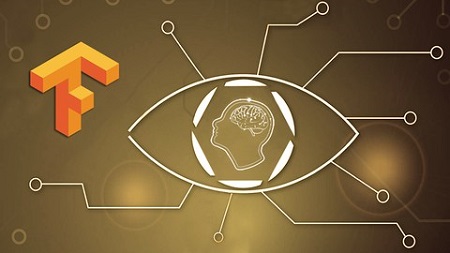
English | MP4 | AVC 1280×720 | AAC 44KHz 2ch | 45 lectures (7h 4m) | 2.56 GB
Build computer vision and natural language processing projects quickly, easily and with few lines of code!
Deep Learning is the application of artificial neural networks to solve complex problems and commercial problems. There are several practical applications that have already been built using these techniques, such as: self-driving cars, development of new medicines, diagnosis of diseases, automatic generation of news, facial recognition, product recommendation, forecast of stock prices, and many others! The technique used to solve these problems is artificial neural networks, which aims to simulate how the human brain works. They are considered to be the most advanced techniques in the Machine Learning area.
One of the most used libraries to implement this type of application is Google TensorFlow, which supports advanced architectures of artificial neural networks. There is also a repository called TensorFlow Hub which contains pre-trained neural networks for solving many kinds of problems, mainly in the area of Computer Vision and Natural Language Processing. The advantage is that you do not need to train a neural network from scratch! Google itself provides hundreds of ready-to-use models, so you just need to load and use them in your own projects. Another advantage is that few lines of code are needed to get the results!
In this course you will have a practical overview of some of the main TensorFlow Hub models that can be applied to the development of Deep Learning projects! At the end, you will have all the necessary tools to use TensorFlow Hub to build complex solutions that can be applied to business problems. See below the projects that you are going to implement:
- Classification of five species of flowers
- Detection of over 80 different objects
- Creating new images using style transfer
- Use of GAN (generative adversarial network) to complete missing parts of images
- Recognition of actions in videos
- Text polarity classification (positive and negative)
- Use of a question and answer (Q&A) dataset to find similar document
- Audio classification
What you’ll learn
- Use pre-trained TensorFlow models to solve Computer Vision and Natural Language
- Processing problems
- Classify images of flowers using Convolutional Neural Networks
- Detect over 80 different objects in images
- Apply style transfer to images
- Build a GAN to complete the missing parts of images
- Recognize actions in videos
- Classify sentiments in texts
- Use information retrieval techniques to return similar documents
- Classify over 500 audio events
Table of Contents
Introduction
1 Course content
2 Course materials
Computer vision
3 Plan of attack
4 Image classification 1
5 Image classification 2
6 Image classification 3
7 Image classification 4
8 Image classification 5
9 Object detection 1
10 Object detection 2
11 Object detection 3
12 Style transfer 1
13 Style transfer 2
14 Style transfer 3
15 Image extension using GAN 1
16 Image extension using GAN 2
17 Action recognition 1
18 Action recognition 2
19 Action recognition 3
20 Action recognition 4
Natural language processing
21 Plan of attack
22 Text classification 1
23 Text classification 2
24 Text classification 3
25 Q&A and information retrieval 1
26 Q&A and information retrieval 2
27 Q&A and information retrieval 3
28 Q&A and information retrieval 4
29 Q&A and information retrieval 5
30 Audio classification 1
31 Audio classification 2
Extra content 1 Artificial neural networks
32 Biological fundamentals
33 Single layer perceptron
34 Multilayer perceptron – sum and activation functions
35 Multilayer perceptron – error calculation
36 Gradient descent
37 Delta parameter
38 Updating weights with backpropagation
39 Bias, error, stochastic gradient descent, and more parameters
Extra content 2 Convolutional neural networks
40 Introduction to convolutional neural networks
41 Convolutional operation
42 Pooling
43 Flattening
44 Dense neural network
Final remarks
45 Final remarks
Resolve the captcha to access the links!